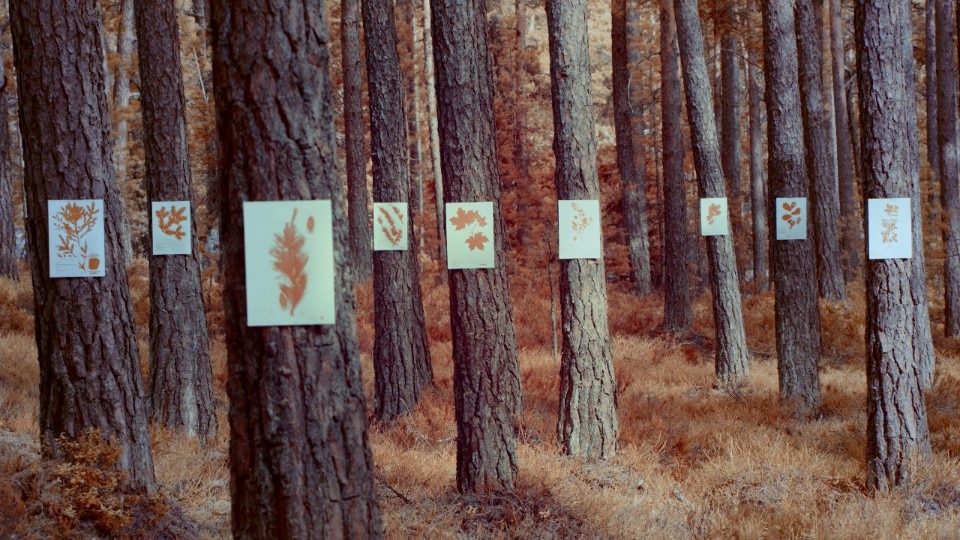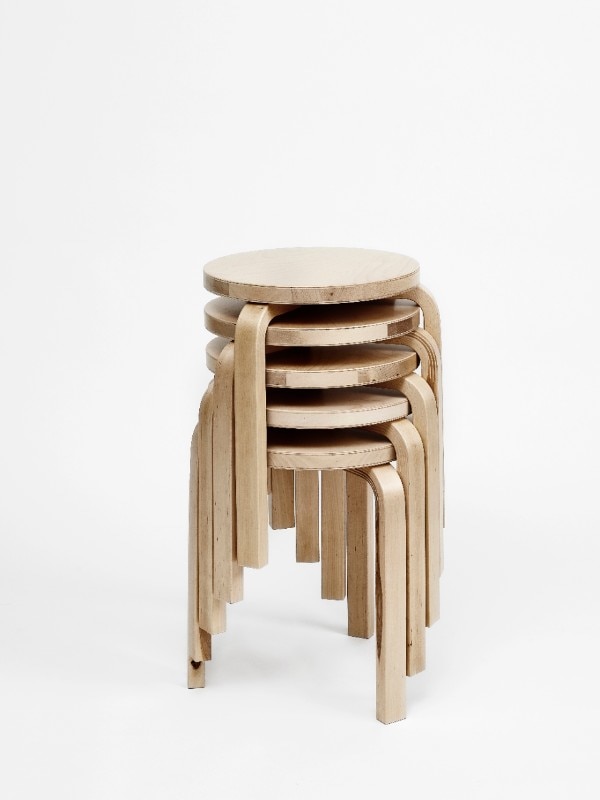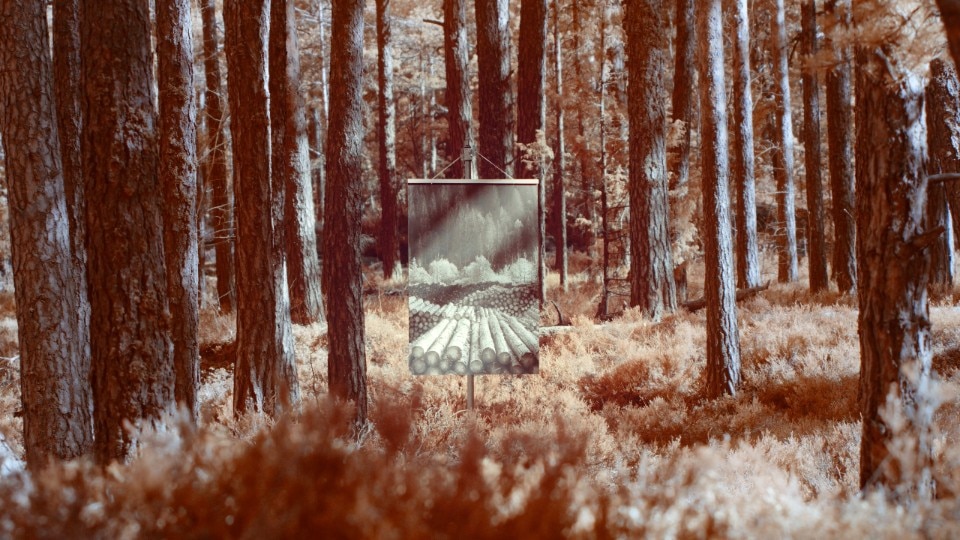This article was originally published on Domus 1080, giugno 2023.
Toshiko Mori: Formafantasma has a very deep understanding of the history of forestry, which also complements your collaboration with Artek, a company that also has an amazing history, being started by the Aaltos. How did this collaboration start and what does it entail?
Simone Farresin: I think the conversation started with Artek before we were presenting our Cambio project for the first time. Marianne asked us if Artek could be involved in one way or another. I think we had a mutual interest in working together.
Marianne Goebl: I got interested when I heard you were exploring the forest, because I knew you were going to do it through a filter that was relevant for us as a design company. When we started the conversation, it became clear to me that we could learn together. We were lacking an understanding of the larger picture of the economy of forestry in Finland. And that’s how it started. We gave you access to our full supply chain, and I think through this you entered into Finland and then you widened your circles and spoke to everyone, from politicians to activists to researchers, to depict quite a large picture. You also investigated the roots of Finnish forestry and looked more specifically at birch and how the development of wood-bending techniques at Artek may have been informed by the specificities of birch in Finnish forests. It became clear to us that we wanted to apply this to our reality, because we had learned from you what was important for a manufacturer to respect. We were using only a very small percentage of the tree, partially due to misguided quality perceptions for some reason that nobody can really explain anymore. Several decades ago it was considered that a product made of wood should not show any natural signs – such as marks, knots, insect trails or the darker core wood – but it should be as even and immaculate as possible, more assimilating to plastics than to natural material.
It is important to mention that there are also marks in the wood left by insects that have now expanded into Finnish forests because of climate change. So, for us, accepting those flaws in production also means not neglecting what is actually happening in the world.
Simone Farresin, Formafantasma
.jpg)
SF: This is happening more and more because of online selling; there cannot be discrepancies between the representation and the real object. It is interesting how much this became an involuntary culture. In the case of Artek, only a little part of the birch tree could be applied to obtain that level of perfection. It has nothing to do with quality; it has everything to do with aesthetics and perception. We redefined, together with Artek, new parameters that accept more considered flaws. It is important to mention that there are also marks in the wood left by insects that have now expanded into Finnish forests because of climate change. So, for us, accepting those flaws in production also means not neglecting what is actually happening in the world. These changes we are trying to achieve with Artek are also a way to make the culture of the forest become the culture of the company. They are so interlinked, but you need to know what it means to produce with one wood or another, to accept flaws or not to accept those flaws. It entails thinking about the production together with the forest. This means, for instance, making these shifts in the quality control of the wood and accepting certain things that are considered flaws. First of all, this will mean that you will need fewer trees to produce the objects. And second of all, wood that in the past would probably have ended up producing lower-quality products – such as paper pulp – is now applied to something much more durable. Consequently, this will also mean less CO₂ emissions because the CO₂ will remain in objects for longer.

MG: When the research was on the table – when the question was, “Okay, how do we now apply this to Artek?” – we could have answered, “Let’s design something new.” But we said, “Let’s rather start by reassessing what we already make and see where we can make a real impact through change.”
SF: Indeed, the plan is to start with Stool 60 and then extend these changes to all the lines, and possibly, in the future, there will be space to design something for the company, but always from this perspective.
MG: The question is how can a cultural commercial company like Artek also have a more activist role. I think this is very central for us. That’s one of the suggestions that Formafantasma gave us. They said, “You know, you’re a design company, but you should actually be a forest company or a forest-centric company.” I think you can only become that by really understanding what the forest is. We need to step up and include the forest in our ambitions.

TM: What about the technique for making the furniture? Is it going to change because of these changes? Does it change the amount of birch waste that is produced? SF We immediately started talking about this idea of extending the warranty.
MG: In the European Union, there’s a two-year warranty on products. But we know that these Artek products last forever, so we decided that we will now extend a lifetime warranty on Stool 60. For us, the lifetime is actually that of the tree. We say that if you buy a Stool 60, it will last at least 50 years, which is also the minimum age of the tree that we use to make it. In that sense, we’re doubling its lifespan to 50 years of the tree in the forest, and then 50 years of the tree as a stool.
SF: This idea of engaging with such a long warranty is also a form of commitment for the company that will have to provide new services. It was natural to talk about the warranty and extending it, because Artek already has this programme called “Artek and Cycle”, which is the reintroduction of historical pieces into the market. It is also a way of dealing with your own, let’s say, heritage. Or with your own junk. It depends on how you want to see it.

TM: I think that is a beautiful idea. When you give a lifetime guarantee, you’re taking your product out of the consumer cycle. The consumer cycle has a built-in obsolescence that you no longer have.
SF: It’s a citizen cycle; it’s not the consumer cycle anymore. All these changes we’re talking about are rather invisible in the product. They are definitely visible in the production, and in the end they will also be visible in some details of the product. But I think that the most interesting changes you can do now, in architecture and design, are rather invisible. It’s behind the scenes where you can do the most.



.jpg.foto.rmedium.png)
.jpg.foto.rmedium.png)
.jpg.foto.rmedium.png)
.jpg.foto.rmedium.png)
.jpg.foto.rmedium.png)
.jpg.foto.rmedium.png)
.jpg.foto.rmedium.png)
.jpg.foto.rmedium.png)
.jpg.foto.rmedium.png)